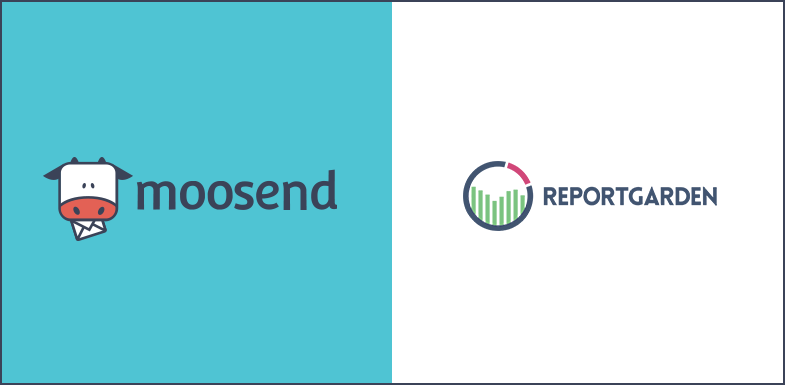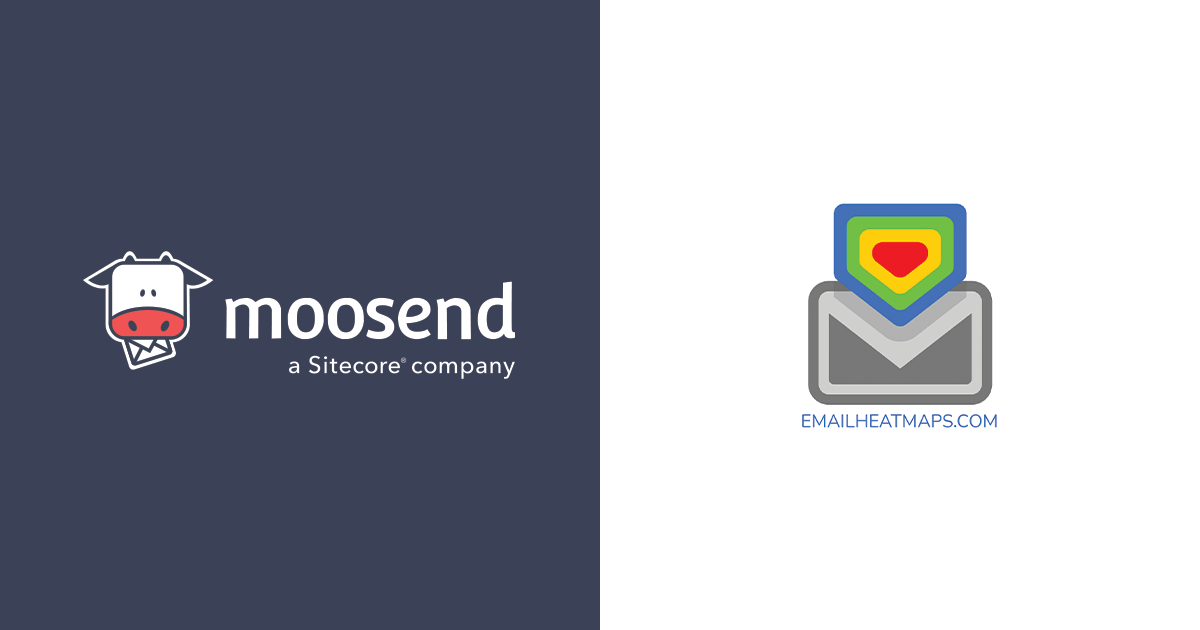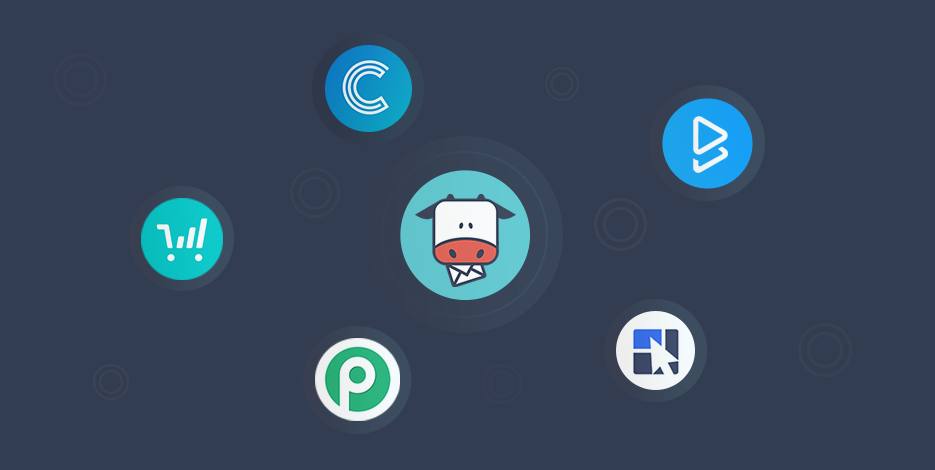

Moosend + ReportGarden: How to master Email Marketing with powerful Reporting ideas

Email marketing is the most trusted form of communication with 77% of consumers choosing email over other online channels. Marketers these days are looking at this as one of the most measurable marketing channels and it’s definitely proved to be one of the key reasons for the growth of businesses that use email marketing. How is an email report part of the picture?
Since many marketers are now using email as a way to connect and engage with their customers, let’s consider a pain point that they could be facing. Imagine you have curated a skyrocketing strategy, but you fail in optimizing it in a way that lasts for long. This happens when there’s a lot of data and it gets hard to look at the metrics that matter.
You could get lost in the numbers, and instead, turn to vanity metrics— such as social media follows or subscribers. But those don’t keep you competitive in today’s 24/7 digital economy, especially in the long run. Boosting those numbers is worthless if they don’t convert prospects into customers. It helps to focus on metrics that are more customer-centric and will give you actionable data and timely user feedback.
In this blog, we’ll explain why it’s necessary to opt for email marketing automation, how a tool can help you grow your business, and get to know what’s important to do after you run an email campaign – Reporting! The key metrics which need to be reported have been clearly explained in this post. By the end of this post, you’ll have a clear idea about the power of email marketing and reporting!
Happy reading 🙂
How can you leverage your Marketing with Emails?
Few claims had been made in the past about the opposite, yet 80% of marketers report email as the strongest performing media buy. A well-executed email campaign can:
• Increase sales
• Increase client loyalty
• Generate leads for business
• Produce additional repeat business
• Reduce marketing costs
Apart from the above, the versatility of email marketing is another reason marketers should keep the tactic in their marketing toolbox. Depending on the depth of the email database and the skill of the curator of the campaign, email marketing messages can range from simple to very complex ones. Email marketing strategies are easy to customize and integrate into other marketing tactics which will help give better results, which makes email an important part of an integrated marketing campaign.
To put it in a nutshell, ‘Why should you try email marketing?’: It’s easy, effective, inexpensive and allows business owners to reach a large number of consumers at a rate of pennies per message.
Why is Email Automation the new magic wand for every Marketer?
Email automation enables you to send out messages to your customers at designated times and with a high level of personalization, which makes it the most effective way to engage. As businesses strive to grow, the smarter marketers are now starting to set up automatic email campaigns that trigger off of a user’s actions. Why? Because these automatic emails are timely, personalized and hyper-relevant to the reader. As a result, these automatic emails deliver better results and eventually, drive revenue for your business.
There are a lot of email drip campaign examples to consider. Imagine you’re running a B2B service and you want to send a welcome email the moment anyone signs up for your tool (for obvious reasons, to improve customer engagement). This email will welcome them and show them how to get started with your service. It would be time-consuming to manually create and send an email campaign to every person when they sign up, so instead, you could set up an automated welcome email that is sent whenever a new person joins your “Sign-up” list.
That’s the beauty of email automation. You can set up the email once and then as more people continue to meet the trigger you defined, the email will continue to be sent to them without you ever having to lift a finger. It essentially ‘automates’ your marketing for you.
To sum-up below are the key reasons every email marketer should use email marketing automation:
1. Create highly segmented email lists that are automatically updated based on user data.
2. Convert quickly potential customers into actual customers.
3. Engage easily with potential and existing customers.
4. Increase efficiency by automating the repetitive tasks associated with customer relationship management.
5. Improve engagement by delivering more relevant, personalized and timely messages to subscribers.
The Power of an Email Automation Tool!
You’ve known what email marketing can do and how automating your emails can save you from hours of manual tasks and leverage your marketing results. Now, it’s very important to choose and set up an email marketing automation software. There are countless email marketing & automation tools out there in the market to serve this purpose. One of such products which can ease your email marketing efforts is Moosend.
Moosend is the coolest Email Marketing Service Provider around, yielding world-class features while keeping things simple and intuitive.
Moosend has designed an email automation system from scratch that will:
- Enable you to create the ultimate sales funnel to turn subscribers into customers with multi-step workflows that will send the right campaign at the right time.
- Boost your customer retention rates by allowing you to serve meaningful and relevant content according to your customers’ behavior.
- Help you segment big lists automatically, using triggers that will add subscribers to new lists for more precise targeting.
- Personalize the content your subscriber receives according to filters like their location, local weather, where they are in their buyer’s journey, and so much more!
- Be kept up-to-date by utilizing real-time information (e.g. weather conditions) and tracking user behavior and content preference, with no effort on your part.
- Help your marketing team capitalize on important customer occasions, such as birthdays and anniversaries, that will make your emails stand out and further build brand loyalty.
- Educate and retain your customers with a sequence of simple, time-based autoresponders.
While marketing automation might sound too technical to grasp, they are actually very easy to use on Moosend’s platform. With Moosend’s marketing automations, you can watch your subscriber list bring the results you need for your business without any increase in your marketing budget.
Inside your Moosend account, you can now build automated workflows with triggers and actions. These workflows work wonders for your company’s growth since they help you automate marketing communications like never before.
Moosend’s marketing automations are about to revolutionize your workdays.
Why are insights critical in shaping your email marketing strategy?
As a marketer, tracking all your efforts can often be a challenge. However, tracking the performance of your email marketing campaigns to the point is important for a number of reasons:
- Like most marketers, you’ve probably got a plethora of things to do and not enough time and resources to execute the tracking process. The key to your success is focusing on the strategies and tactics that drive results and not spending too much time on those that don’t. By measuring the performance of your email marketing, you can see how it compares to other channels (like social media, PPC, content syndication) and better prioritize your time and efforts to drive maximum results.
- In the past we may have looked at our email performance in an one-off, campaign-by-campaign basis looking at how each campaign performed in a silo, but truly understanding our analytics and trends at an aggregate level is critical to inform our email marketing strategy. If you only look campaign by campaign and are not measuring engagement growth over time, you could be missing out on valuable insights.
The more effective approach is to take a step back and look at which engagement and acquisition strategies are working better and why in order to inform your decisions.
Measuring Email Marketing effectiveness and why reporting on key metrics is necessary?
Email has the enormous advantage, compared to other channels, of being perfectly traceable in every aspect. It is always possible to track how many users open messages, how many have clicked within them, which emails brought more conversions and so on. Once an email is sent, marketers are left with heaps of data to take out insights from. What are marketers to do with the data?
You spend time creating an awesome email marketing strategy, spend some more time to set the campaign up. What’s next? You definitely need to have a reporting process in place, in an age where marketing activities are increasingly led by the analysis and interpretation of data. It’s very important to know how to measure and constantly monitor your activities’ performance. Reporting is the only way to understand the value and success of your campaigns.
There are some important metrics that you should be measuring on a regular basis if you want to maintain email list health and improve the ROI of your campaigns. In this post, we’ll walk you through how you can do reporting on email campaigns using tools like ReportGarden helping agencies with their reporting and client management.
Now let’s have a look at what metrics to track for a positive growth.
The key METRICS you need to track right away!
Focusing on the right metrics will help you analyze and improve any of your marketing campaigns. With so many numbers up in the air, it’s important for marketers to have an explicit understanding of critical metrics.
In the past, email reporting used to be lackluster (mostly reporting vanity metrics like open and click-through rates and not much else) which caused many marketers to focus on basic email metrics like the number of subscribers, opens, and clicks.
But sophisticated marketers need to go beyond opens and clicks as an authentic email marketing strategy is about long-term subscriber activity, engagement trends, and optimization. The metrics you chose to report on are crucial to gain insights and act upon them to further optimize your campaigns.
Below are the key metrics, we recommend you to report on for better optimization of campaigns.
1. Open Rate:
Among email metrics, the open rate indicates the number of emails opened compared to the total amount delivered.
Open Rate: (Emails opened / Emails delivered) * 100
2. Click-through rate (CTR):
This is the number of clicks on the links contained in an email message, divided by the number of emails delivered. If a good open rate is indicative of a good subject, the click-through rate is determined by the email’s content – images, copy and especially calls-to-action.
CTR: (Emails clicked / Emails delivered) * 100
3. Unique clicks and unique open rate:
Within your email metrics, make sure to differentiate the total number of openings or clicks – which also include multiple openings or clicks by the same user – from the number of single users who have opened or clicked at least once. In this case, the terms unique openings or unique clicks are used.
Unique Open Rate: (Unique clicks or unique openings / Emails delivered) * 100
4. Bounce rate:
The bounce rate is the percentage of email addresses that returns an error after its dispatch. Errors can be either permanent (hard bounces) or transient (soft bounces). Hard bounces include non-existent or invalid email addresses that will never receive the message. Soft bounces, on the other hand, include full inboxes or temporary server issues – in these cases, delivery will ensue if the issue does not persist.
Bounce Rate: (Returned emails / Sent emails) * 100
5. Unsubscribe rate:
Keeping track of subscription trends is important, but knowing how many users unsubscribe is equally important. A healthy unsubscribe rate should stay at low levels, less than 2%, and the number of unsubscribed users should always be lower than the number of new users.
Unsubscribe Rate: (Unsubscribed users /Emails sent) * 100
6. Opens by device:
Knowing if users open your messages on their desktop, smartphone or tablet is highly valuable information that allows you to design evolved and effective strategies. This metric data cannot be calculated manually but can be directly given by automation tools like Moosend.
7. Spam score:
Anti-spam software assigns scores to emails: they analyze an email in its entirety and give each item they perceive as a spam risk a number of points. If the sum of the scores exceeds a certain threshold (typically 5.0), the message has a good chance of winding up marked as spam.
8. List Growth Rate:
When building email lists, your list growth rate is the rate at which your email list grew over a certain period of time.
List Growth Rate: New Subscribes – (Unsubscribes + Complaints) / Total Subscribers (over a specific period of time, e.g. the last 30 days)
9. Conversion rate:
Every email has (or should have) a clear objective that corresponds to the action you would like users to take. Some examples of objectives are: make a purchase, read an article on your blog, fill out a subscription form, request a quote or sign up for an event or webinar.
Conversion Rate: (Number of users who have completed the action / Emails delivered) * 100
10. Return on investment (ROI):
Return on investment is clearly one of the key metrics to monitor because it accurately measures the cost-effectiveness of email campaigns. In other words, ROI stands for how much they earn you in comparison with the incurring costs for their implementation.
ROI: [(Value of sales from an email campaign – Campaign costs) / Campaign costs] * 100
How do you set up your email marketing client reports?
Set up reports for your email marketing campaigns within minutes using tools like ReportGarden. With ReportGarden, you can just go ahead linking your email automation tool and easily create reports.
Key features of ReportGarden for reporting on your email metrics:
- Drag and drop widgets to ease your reporting.
- Email marketing integrations are available.
- Using ReportGarden’s simple editor you can track important metrics of your choice for a complete picture of your campaigns.
- White-label option, so that you can build a custom report that matches your branding and signature look.
- Automate your reports with a single click.
Wrap-Up
You can leverage your email marketing strategies with reporting which is all about creating the right reports and identifying powerful insights that are easy to take action on. You can use these insights to continually create better-performing campaigns that generate undeniable results for your business.






 Published by
Published by